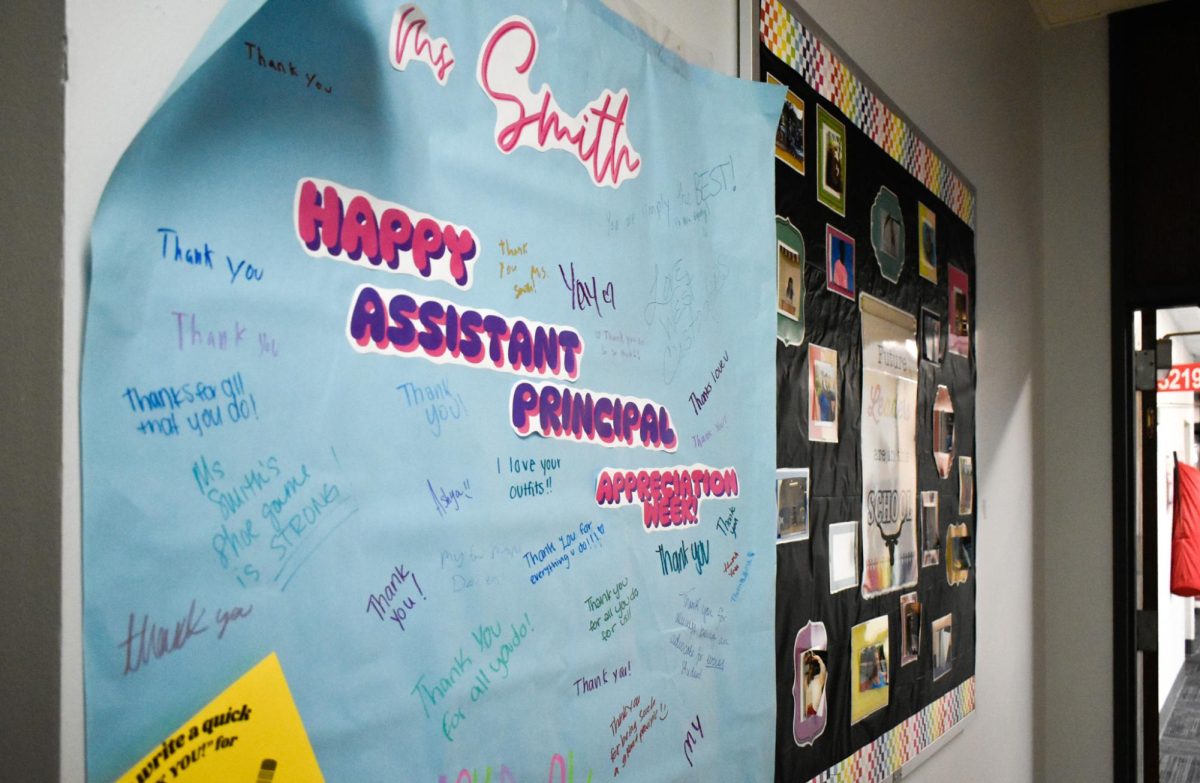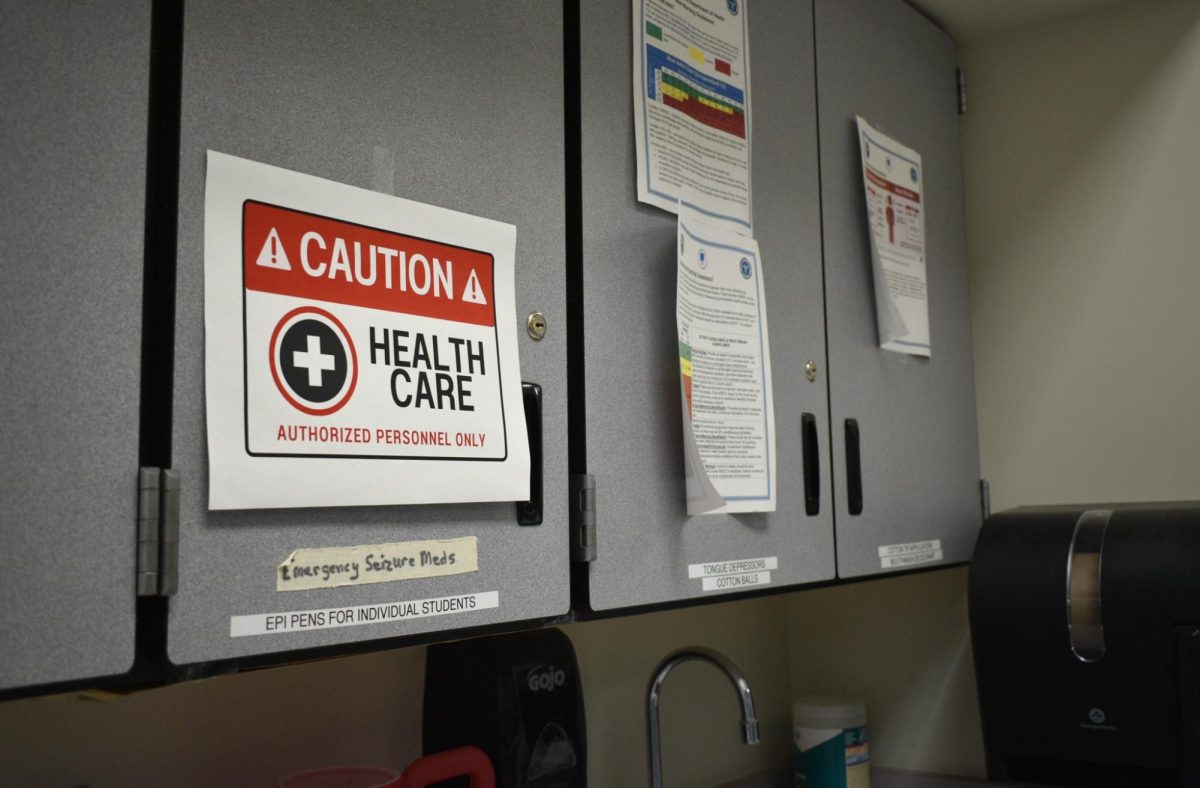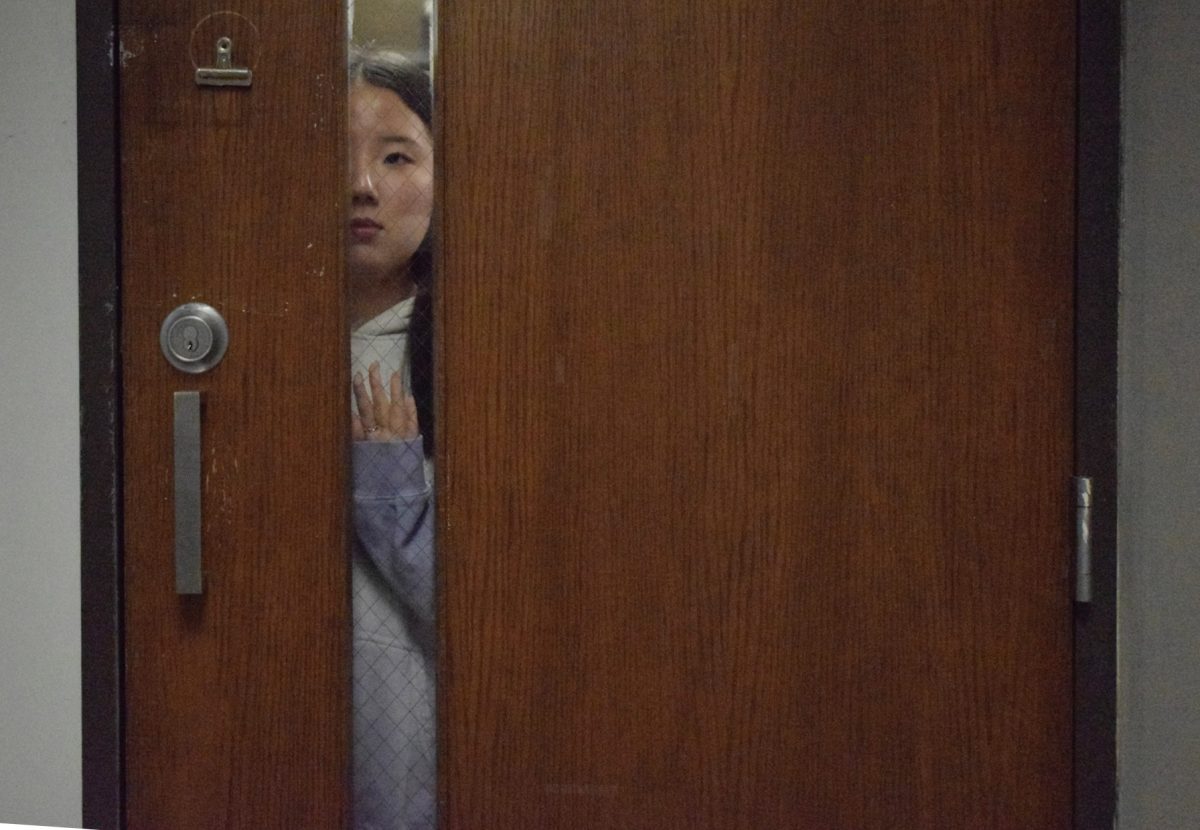It’s no secret that high school is a stressful time. Between balancing classwork, clubs, sports and a social life, it’s easy for students to feel overwhelmed, and managing mental health amidst these pressures is an intricate balancing act. As September is National Suicide Awareness Month, we are left to wonder — are our schools doing enough to support students at a time when so many are losing their battles to mental health?
In 2021, 1,952 teens between the ages of 14-18 died by suicide. On paper, it may just seem like a statistic — but each one of these teens had a story, a life and a purpose that was defeated by mental health hardships. We look to create a future where this number decreases, but it can only be done by making sure that every young person has all the available mental resources that are easily accessible, starting at West High.
Over the past few years, schools across the country have made changes to protect student mental health, like implementing wellness programs, making counselors more accessible, or even offering mental health days to take off school. However, assistance like this is limited across the nation and isn’t always enough to protect a student’s life. When looking at the implementations with a critical lens, the flaws in the systems start to show.
For example, counselors may be easier to get into contact with, but the counselor to student ratio makes it so that it’s harder to develop meaningful connections. West High’s enrollment sits at around 1,400 students, split between four comprehensive counselors: a ratio of 350 to one. Can 350 students each develop an individualized, meaningful relationship with one counselor? Odds are, most of the student population aren’t very close with their counselor.
West High, in particular, has implemented specialized staff members to help certain groups of students get mental health support in school, one of them being gifted liaison Jamie Izo, who supports students that exhibit abnormally accelerated development.
“My plan is to reach out to [gifted] students, ask them what needs they have and try to meet those needs on an individual basis,” Izo said. “If they have questions about [which] classes to take, if they’re struggling in a class and they want some help, if they have questions about college applications, anything like that. I’ll try to figure out a solution and help them.”
Through her work with gifted students, Izo noticed different behavioral patterns and developed plans and coping strategies to help manage mental health. She wants to particularly focus on individual needs of students rather than using generalized methods.
“I want to do things that matter for individual people; my plan is to pull grades and look [to] see if there’s anybody who’s got D’s or F’s, and then go talk to them [to] see if there’s anything that they need,” Izo said. “[Also], my plan is to pull attendance, see if there’s kids that are missing school, go and talk to them individually [and] find out if there’s a reason.”
Having people like Izo in the building builds reassurance to gifted students that their needs are being met. It’s important that these students have readily available resources to help with their mental health issues, even if not every student needs them.
Another specialized caretaker employed at West High is special education teacher Wendy Zielekiewicz, who works alongside a team of fellow speech language pathologists to run West High’s special education department. This year, we introduced Banyan, an English Labrador Retriever whose purpose is to help students relax and spread joy around the school. Zielekiewicz is one of his handlers.
“[Banyan and I] like to stand outside my door, and everybody comes to pet him; they instantly say [that] he [puts] them in a better mood [and] they go to class with a smile on their face,” Zielekiewicz said. “He is trained to seek people out that are emotionally dysregulated or anxious, and he comes to sit by them and feels their emotions.”
While Banyan is a powerful stress reliever, he isn’t a one-size-fits-all panacea. Zielekiewicz uses alternative coping mechanisms to help her students regulate their emotions in a healthy way.
“We have a lot of coping strategies: breathing, counting, stretching and some yoga,” Zielekiewicz said. “[The strategies] also [carried over] into my home life; I’ve realized I need to practice what I preach.”
Izo and Zielekiewicz are examples of Parkway’s implementation of wellness resources to help students cope with stress and strengthen an understanding of their emotions. The next logical step for the district is to make these resources available to every student, not just those who qualify within certain boxes, such as gifted students or students with special needs. Some student-led clubs at the school aim to provide such safe spaces to discuss mental health, like Feminist Club.
“In Feminist Club, we try to educate on women’s issues, but we also want to take care of our own women and people at West [High],” junior and Feminist Club co-president Clara Lazarini said. “We have educational meetings and relaxing meetings, where we usually just color and draw the whole meeting to de-stress [because of] everything going on with school.”
Between a solid counseling department, several specialized staff members to assist with student mental health issues and a diverse group of student-created clubs and organizations, it’s clear that West High is above and beyond what other schools do to help protect their students’ mental health. Nevertheless, there are still improvements that could be made.
The first step to resolving many student mental health issues is to reduce the stigma and fear around talking about it. This requires us to educate ourselves and others about mental health, both in school and in the community.
“[The most important thing is] to get parents involved,” Zielekiewicz said. “[Students] learn these coping mechanisms at school, [so] make that carry over into the household and into the community for parents to really do a better job at monitoring their kids. Families have a big impact on their children, and when parents have healthy coping mechanisms, their children are more likely to [have them].”
Currently, the counseling department sends out a weekly newsletter, including details about upcoming events happening and information about mental health resources. One such resource is the Mental Health America of Eastern Missouri, a non-profit organization that encourages proactive intervention of student mental health crises.
Proactive intervention is another change that West could make to prevent mental health issues in students before they occur. Right now, students typically only reach out to counselors when issues have already developed. However, if we implement continual check-ups on student mental health, we may be able to resolve crises in advance.
Above all, simply being there — making it known that there are people at school that genuinely care about students’ feelings — is the most important thing that schools can do to make everyone feel safe and protected within school walls. As school and life continue to get more and more stressful, creating lifelines for students can go a long way.

![Mounting school pressure can leave many students overworked and overstressed. Schools must give students the necessary resources to help assuage student mental health issues and prevent the development of serious crises. “The biggest thing [schools] can do [to protect student mental health] is offer more time [to do work], like a study hall, or offer more support from teachers so that students don't feel stressed out and can get help in areas that they need,” senior Bhavya Gupta said.](https://pwestpathfinder.com/wp-content/uploads/2024/09/unnamed-4.jpg)

![Dressed up as the varsity girls’ tennis coach Katelyn Arenos, senior Kate Johnson and junior Mireya David hand out candy at West High’s annual trunk or treat event. This year, the trunk or treat was moved inside as a result of adverse weather. “As a senior, I care less about Halloween now. Teachers will bring their kids and families [to West’s Trunk or Treat], but there were fewer [this year] because they just thought it was canceled [due to the] rain. [With] Halloween, I think you care less the older you get,” Johnson said.](https://pwestpathfinder.com/wp-content/uploads/2025/10/DSC00892-1-1200x800.jpg)
![Leaning on the podium, superintendent Melissa Schneider speaks to Parkway journalism students during a press conference. Schneider joined Parkway in July after working in the Thompson School District in Colorado. “My plan [to bond with students] is to get things on my calendar as much as possible. For example, being in [classes] is very special to me. I am trying to be opportunistic [meeting] kids [and] being in [the school] buildings. I have all the sports schedules and the fine arts schedules on my calendar, so that when I'm available, I can get to them,” Schneider said.](https://pwestpathfinder.com/wp-content/uploads/2025/09/IMG_5425-1200x943.jpeg)


![Red, white and blue, the American flag holds the values of our democracy. The fight that we once endured has returned, as student journalists and senior correspondents across the country are losing their voices due to government control. “[Are] the White House and [the] government limiting free speech [and] freedom of the press? Yes [they are],” chief communications officer of the Parkway School District and former journalist Elisa Tomich said.](https://pwestpathfinder.com/wp-content/uploads/2025/03/Untitled-design-14.jpg)
![A board in the Parkway West counseling department displays pennants of selective universities. With a wide range of students interested in attending, it’s important that these schools have clear priorities when deciding who to admit. “[Washington University] had the major that I wanted, psychology, philosophy, neuroscience. That's a holistic study of the brain, and [WashU is] the only college in the world that offers that. That's the main reason I wanted to go; I got into that program,” senior Dima Layth said.](https://pwestpathfinder.com/wp-content/uploads/2025/02/Flag-1.png)

![Within the U.S., the busiest shopping period of the year is Cyber Week, the time from Thanksgiving through Black Friday and Cyber Monday. This year, shoppers spent $13.3 billion on Cyber Monday, which is a 7.3% year-over-year increase from 2023. “When I was younger, I would always be out with my mom getting Christmas gifts or just shopping in general. Now, as she has gotten older, I've noticed [that almost] every day, I'll open the front door and there's three packages that my mom has ordered. Part of that is she just doesn't always have the time to go to a store for 30 minutes to an hour, but the other part is when she gets bored, she has easy access to [shopping],” junior Grace Garetson said.](https://pwestpathfinder.com/wp-content/uploads/2024/12/DSC_0249.JPG-1200x801.jpg)

![Senior Sally Peters stands in the history hallway, contemplating her choices in the 2024 United States and Missouri elections on Nov. 5. As a member of Diplomacy Club, Peters has discussed key candidates and issues in contemporary American politics. “[As students], we're starting to become adults. We're realizing how much the policies that are enforced and the laws that make it through the House and Senate are starting to affect us. [Opportunities such as] AP [U.S.Government] and Diplomacy Club [make elections feel] a lot more real,” Diplomacy Club vice president and senior Nidhisha Pejathaya said.](https://pwestpathfinder.com/wp-content/uploads/2024/10/Flag-1-1.png)
![Sitting courtside before a junior varsity girls’ tennis match, senior Tanisi Saha rushes to finish her homework. Saha has found herself doing academic work during her athletic activities since her freshman year. “Being in sports has taught me how to stay organized and on top of my schoolwork. [With] a busy practice and game schedule, I’ve learned to manage my homework and study time better,” Saha said.](https://pwestpathfinder.com/wp-content/uploads/2025/11/DSC_0022-1200x800.jpg)
![Sophomore Maryem Hidic signs up for an academic lab through Infinite Campus, a grading and scheduling software. Some students enjoyed selecting their responsive schedule in a method that was used school-wide last year. “I think it's more inconvenient now, because I can't change [my classes] the day of, if I have a big test coming and I forget about it, I can't change [my class],” sophomore Alisha Singh said.](https://pwestpathfinder.com/wp-content/uploads/2025/10/DSC_0012-1200x801.jpg)
![Senior Dhiya Prasanna examines a bottle of Tylenol. Prasanna has observed data in science labs and in real life. “[I] advise the public not to just look or search for information that supports your argument, but search for information that doesn't support it,” Prasanna said.](https://pwestpathfinder.com/wp-content/uploads/2025/10/DSC_0073-2-1200x800.jpg)
![Junior Fiona Dye lifts weights in Strength and Conditioning. Now that the Trump administration has instituted policies such as AI deregulation, tariffs and university funding freezes, women may have to work twice as hard to get half as far. "[Trump] wants America to be more divided; he wants to inspire hatred in people,” feminist club member and junior Clara Lazarini said.](https://pwestpathfinder.com/wp-content/uploads/2025/05/Flag.png)
![As the Trump administration cracks down on immigration, it scapegoats many immigrants for the United States’ plights, precipitating a possible genocide. Sophomore Annabella Whiteley moved from the United Kingdom when she was eight. “It’s pretty scary because I’m on a visa. When my visa expires next year, I’m not sure what’s going to happen, especially with [immigration] policies up in the air, so it is a concern for my family,” Whiteley said.](https://pwestpathfinder.com/wp-content/uploads/2025/05/DSC_0077-7copy.jpg)
![Shifting global trade, President Donald Trump’s tariffs are raising concerns about economic stability for the U.S. and other countries alike. “[The tariffs are] going to pose a distinct challenge to the U.S. economy and a challenge to the global economy on the whole because it's going to greatly upset who trades with who and where resources and products are going to come from,” social studies teacher Melvin Trotier said.](https://pwestpathfinder.com/wp-content/uploads/2025/05/MDB_3456-1200x800.jpg)



![Some of the most deadly instances of gun violence have occurred in schools, communities and other ‘safe spaces’ for students. These uncontrolled settings give way to the need for gun regulation, including background and mental health checks. “Gun control comes about with more laws, but there are a lot of guns out there that people could obtain illegally. What is a solution that would get the illegal guns off the street? We have yet to find [one],” social studies teacher Nancy Sachtlaben said.](https://pwestpathfinder.com/wp-content/uploads/2025/01/DSC_5122-1200x800.jpg)
